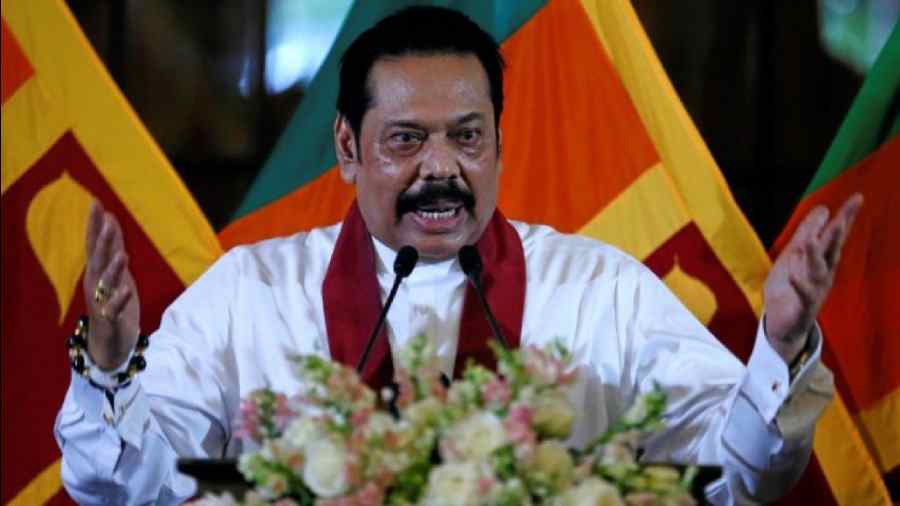Sri Lanka’s Prime Minister Mahinda Rajapaksa resigned on Monday after clinging on to power for weeks, following unprecedented anti-government protests demanding his ouster as well as the administration led by his younger brother and President Gotabaya Rajapaksa over the country’s worst economic crisis.
Mahinda’s resignation comes hours after his supporters attacked anti-government protesters outside President Gotabaya’s office, leaving at least 154 people injured and prompting authorities to impose a nationwide curfew and deploy army troops in Colombo.
At least two people, including a ruling party MP, were killed during violent clashes.
Mahinda, 76, sent his resignation letter to Gotabaya after violent scenes in Colombo. “Effective immediately I have tendered my resignation as Prime Minister to the President,” Mahinda tweeted.
Mahinda in his resignation letter said that he is stepping down to pave the way for the all-party interim government to be formed.
He said that he will be “ready to make any sacrifice even in the future in order to help the people and the government overcome the present crisis”.
The cabinet was also dissolved with the resignation of the Prime Minister.
Earlier in the day, Mahinda’s supporters attacked anti-government demonstrators at MynaGoGama and GotaGoGama protest sites. The tents opposite Temple Trees, the official residence of the Prime Minister, were dismantled by the mob.
The police used water cannons to disperse the unruly ruling party supporters and formed a human chain to prevent the supporters from entering GotaGoGama. However, the mob pushed their way past the police chain and attacked protest village. Around 154 people were injured in the violence.
Army troops were deployed to the sites to bring the situation under control. Curfew, which was initially declared in Colombo, was imposed island-wide with immediate effect until further notice, a police spokesperson said.
The defence secretary urged public support to maintain peace in the country, while three-armed forces have been called in to assist police for public security. Leave for all police personnel was cancelled until further notice.
However, the violence against anti-government protesters triggered widespread anger, with people turning on Rajapaksa’s supporters.
The vehicles carrying Mahinda’s supporters were stopped and attacked in many parts of the country.
Amarakeerthi Athukorala, a Sri Lanka Podujana Peramuna (SLPP) MP from the Polonnaruwa district, who was surrounded by anti-government groups at the north western town of Nittambuwa, opened fire on the protesters.
When the angry mobs toppled the car, he fled and took refuge in a building and committed suicide with his revolver.
The offices of former minister Johnston Fernando were attacked by angry crowds in Kurunegala and Lillie Street. A tavern owned by him was also set on fire. The Negombo, home of former minister Nimal Lanza, was also attacked. The Moratuwa residence of mayor Saman Lal Fernando was set on fire.











